DIY SEO: Black Hat SEO and Its Potential Risks

Search engine optimization has been actively used by website owners ever since search engines came to be part of our world. Numerous SEO techniques have been introduced to help businesses improve their visibility on the web, starting with keyword optimization and ending with user-oriented website localization. However, there have always been those who tried to go beyond the rules in order to get more profit than others and in the fastest way possible. That is when black hat SEO was born.
Although Google and other search engines keep on improving their algorithms to prevent wrongfully inflated websites from being visible in the search results list, black hat SEO is still quite tempting for many E-Commerce businesses that strive for improving their positions in the niche. However, we will try to prove to you that none of the black hat SEO techniques is worth using by any business even in the most exceptional circumstances. In this guide, we will explain the basics of black hat SEO, how you can recognize its potential presence on your website, and what awaits you if you dare to use it for your own marketing campaign.

Table of contents
Black hat SEO vs. white hat SEO
Black hat SEO owes its name to the Western movie genre, thus representing the antagonistic part of white hat SEO. Unlike white hat SEO, which aims to naturally improve website’s performance through providing a high-end content which is relevant to a user, black hat SEO tries by all means to use automated search engine algorithms to artificially inflate traffic, website ranking, or pay-per-click profits. Although both white and black hat SEO initially work for higher rankings in the SERPs, they apply radically different strategies to achieve their goals. Black hat SEO techniques usually include illegal and aggressive marketing manipulations, such as spamdexing, hidden text, keyword stuffing, cloaking, and much more. All of them are considered illegal in terms of search engine policies, which is why websites involved in black hat SEO activity tend to sooner or later get severely penalized.
How to define a border between white hat SEO and black hat SEO?

It is important to distinguish at which particular moment your SEO campaign shifts from white to black. In the past, what is now regarded as black hat SEO techniques used to be white SEO techniques. However, things changed after some people went too far with using original search engine optimization features. To prevent further chaos in the SERP system, Google and other search engines started working on more sophisticated ways of website indexing. As a result, search engine bots are now trained to more easily identify the usage of such strategies as keyword spamming, which, in its turn, requires more sophisticated black hat SEO strategies to be applied instead.
One of the important factors that make it evident which type of SEO you use is the initial aim you set up before your marketing campaign. If you only care about being ranked well by search engine bots, you are probably aiming at black hat SEO. On the contrary, if you care about how real people perceive your website and want them to approve of it, you are probably heading towards the “white” type.
Why not giving it a try anyways?
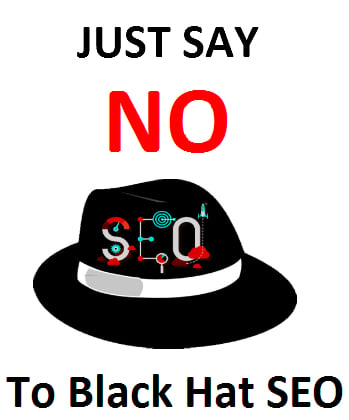
If you are smart enough to take a risk and not to get eventually revealed by Google’s Webspam team, you can certainly try using as many black hat SEO techniques as you want. However, statistics show that even the most noteworthy companies at different times experienced serious failures due to having dealt with “bad” kind of search engine optimization. Some of the penalties even lead to a massive impact on their future revenues.
For example, among such companies there were BMW who were penalized for using doorway pages in 2006. As a result, Google manually reduced their PageRank value to 0. Another example is Google Chrome that has been caught using paid blog posts on their browser’s main page in 2012 and was later penalized by 9 to 7 PageRank reduction with the following removal of their website from the first page of SERPs for the keyword “browser”. Finally, although Genius’ penalties of 2011 lasted only 10 days, the company eventually had a sharp drop of around 700 000 daily visitors on their website.
The main features of black hat SEO

Because black hat SEO aims specifically at search engines and their automated algorithms, it includes a variety of tactics that allow webmasters to make search bots give their websites high rankings regardless of their content and actual relevance. A typical black hat SEO strategy will include the following:
- It will violate search engine rules and terms of use;
- It will significantly decrease a level of real user visits to a website;
- It will pervert website’s content for it to be more visible to search engines while at the same time making it inadequate in terms of user experience.
Although it is widely accepted that black hat SEO can actually improve website rankings, this kind of solution will eventually bring more expenses than real profit as long as search engine users and their major priorities are consistently ignored.
The most popular black hat SEO techniques
Here we present a list of the most frequently used black hat SEO techniques that are considered inappropriate in terms of general search engine rules. Keep in mind that potential risks of utilizing any of the given practices will depend on one’s consistency and overall quality of realization.
Paid Links
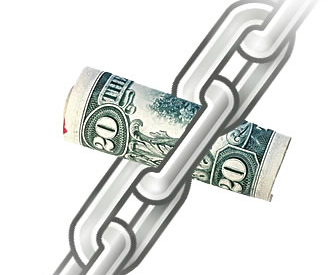
By default, it is quite acceptable to buy links from high-rank websites in order to increase the rank of your own website. Using spare budget for acquiring paid links usually saves a good deal of time spent on improving your online presence. Once you get connected to a highly-ranked website, you may stop worrying about the quality of your content, as your overall rankings are likely to increase anyways. It is also popular to use anchor text in a link as a way to make it more clickable to a user, but in fact it is more often done to increase website’s visibility for search engine bots.
Another alternative to buying links is the process of exchanging links. In this case, two or more websites coordinate with each other in order to manipulate their own PageRanks.
Both practices can be considered legal unless they turn into link abuse. Buying or exchanging too many links will be soon considered as violation leading to penalties.
Link farms
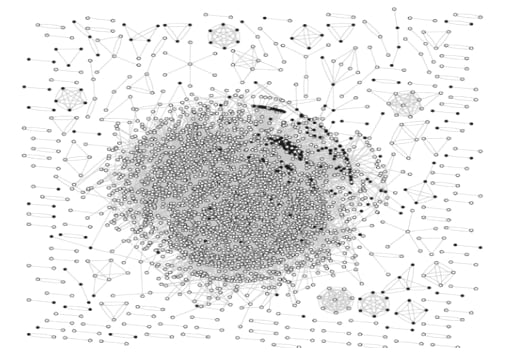
Using link farms is pretty much close to buying and exchanging links but with a significant difference in quality. While you can purchase a link due to its relevancy, you can also get multiple links for free to influence search engine indexing with most of the links being directed from low-end website pages. More frequently, link farming assumes that groups of low-quality websites connect to each other to form as many backlinks as possible thus boosting their overall rankings. As a result, almost an empty website with no traffic could get to the top positions in SERPs just due to having up to dozens links directed to it.
However, Google became aware of the link farming activity and soon managed to improve their ranking algorithms, which made them take into account not only the number of backlinks but also their quality. This lead to significant drops in many websites’ rankings, as their numerous links basically did not influence PageRank at all. Despite Google’s updates, link farms continue to exist trying to overcome newly created barriers by inflating the relevance of their websites.
Keyword Stuffing
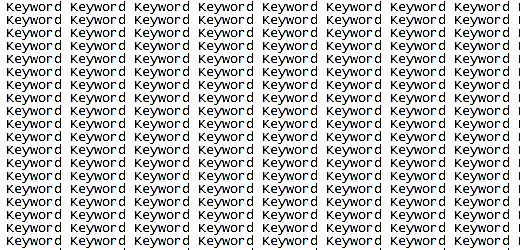
This is the easiest way to attract search engines’ attention to your website if you don’t care about its content. Simply stuff your landing page with a long list of unconnected thematic as well as non-thematic keywords. The key element of this black hat SEO technique is that you have to use repetitive keywords throughout the on-page text to optimize its visibility. That will make no actual sense to the reader but is likely to serve your needs for making the website look relevant to search engine bots.
Or not. Search engine bots experience constant updates, and now it is simply impossible to continue with traditional keyword stuffing anymore. However, some website owners learnt to use this technique even in a smarter way: they create a user-friendly content and fill it with a bunch of hidden keywords and phrases that are only visible to search engines to provide a flawless rise of relevance to a website. This, however, can be also identified by the Webspam team leading to corresponding consequences.
Hidden/invisible text
As we have mentioned before, hidden text is a popular way in black hat SEO to fill your page with the content which is important for getting indexed by search engines. Hidden text is usually realized as a white text displayed on a white background (other colors are also acceptable, but they have to be similar in both cases). Some black hat SEO practitioners also put other types of hidden content to their website pages, including links and images. Overall, not a good thing to do.
Doorway pages
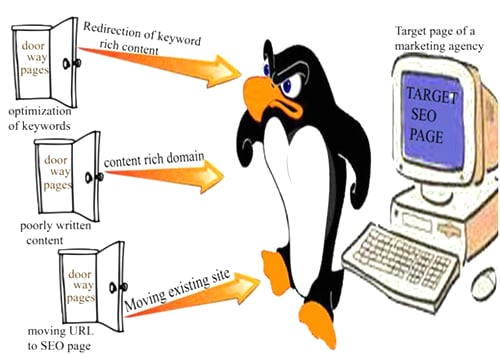
As a consequence of strict search engine policies imposed after the mass keyword stuffing, black hat SEO activists came to alternative ways of hiding spamdexed web pages from users. Specifically, they used redirects that transfer them from the searched page to a different location. In this case, the searched page is in fact a keyword-stuffed page designed to get high rankings from search engines, while the page to which a user is redirected is completely irrelevant to their initial search. Doorway pages are usually created by using meta refresh tags, JavaScript, or server-based redirection methods. The main issue with a doorway page is that it is impossible for the majority of search engine algorithms to detect it, but when they do, the whole website gets immediately banned from the SERPs.
Cloaking
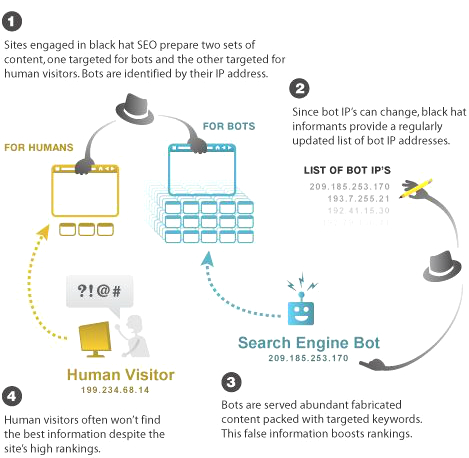
Cloaking is in fact a general black hat SEO technique which can be realized in a form of a doorway page, or keyword stuffing, or hidden text. In fact, it is a technique of presenting visitors with one type of content while showing completely different content to search crawlers. More often cloaking is performed in such a way that users will reach a page which is not related to their search at all. What users eventually get is a page filled with pornographic images or videos, while search crawlers get what seems to look like a relevant potentially high-ranked content, which leads to the fabricated boost of website rankings.
Article Spinning

This is a kind of plagiarism which is now more often performed with the help of specialized black hat SEO software. By using such software, webmasters can create unique content based on the content taken from one or more highly ranked websites. In result, they get slightly similar texts which are generally of a considerably lower quality but which are perceived by search crawlers as original content thus allowing websites to get higher rankings as well. Moreover, article spinning can at times be so tricky that it becomes impossible to detect plagiarism with corresponding tools.
Duplicate content
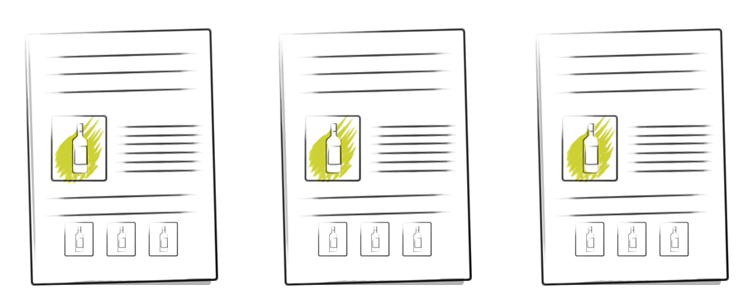
Unlike article spinning, duplicate content is a way more straight-forward type of plagiarism. It is usually made through a typical copy-paste method to fill a website with highly qualified content from over the web in the fastest way possible. In order not to be detected by a Webspam team, website owners prefer stealing content from other domains; this allows them to minimize the risk of exposing the fact of using plagiarized materials.
There are cases, however, when websites use duplicate content because of ignorance or a lack of knowledge in a given field. Although it may not be considered a typical case of black hat SEO, it is still plagiarism which is not approved of by both users and search engines.
Spam Comments

It is likely that many of you happened to come across spam comments on different websites and blogs. Some of you may have even experienced troubles with spam comments on your own website, which is even worse. This type of black hat SEO can be considered as the most irritating one, as it simply turns a website into waste and increasingly affects overall user experience. The main purpose of spamming in comments is to provide a website with a backlink to a ‘bad guy’s’ website page thus improving his rankings. However, this method can as well be called senseless, as such backlinks are of nofollow type, which means that they have no real value in terms of one’s PageRank. So no matter how much backlinks you create through spamming in comments, it will not influence your rankings in any way.
To prevent your own website from spam comments, we recommend using manual post moderation or specialized spam filtering plugins that automatically detect spam comments and delete them.
Spam blogs

Spam blogs, or simply splogs, are a way to improve one’s rankings through making blog posts stuffed with affiliate backlinks, paid ads, and all the other types of links directing to pages with little or no relevance to a user. Spam-like blog posts themselves are often created by using keyword-stuffed, stolen, or just poorly written content. So if you happen to run against an article which is full of links and looks awfully unreadable, consider reporting about a potential black hat SEO case to Google’s Webspam team.
Page Swapping
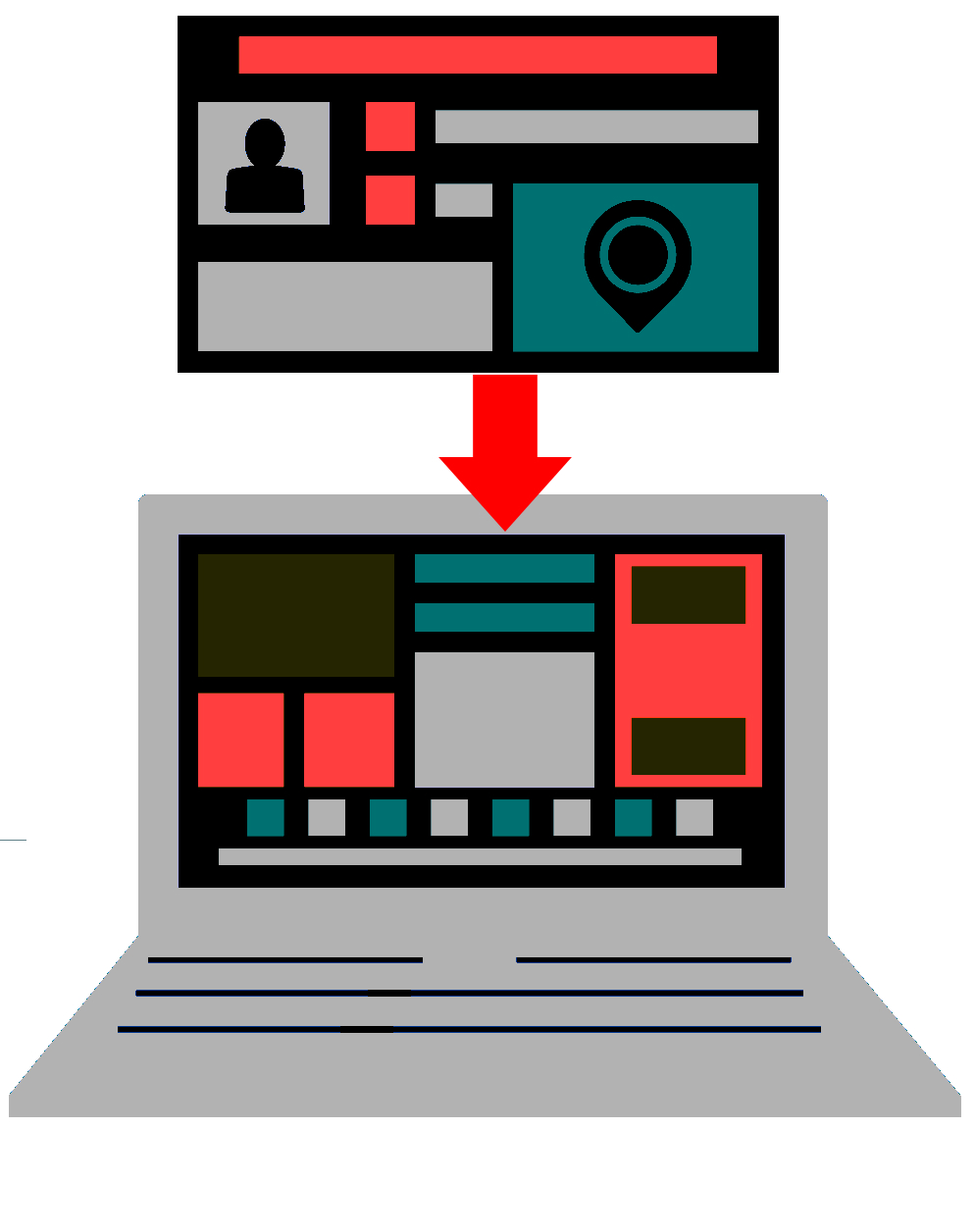
In the world of black hat SEO, page swapping is a tricky technique allowing webmasters to fool search engine bots by first letting them index and rank their websites and then replace all the on-page content with spammy elements. The problem is that even after the content has been changed, users will keep on getting the same search results in the SERPs and clicking on the same link with the hope to find what they have seen before but eventually getting a bunch of irrelevant stuff instead.
Spam ping
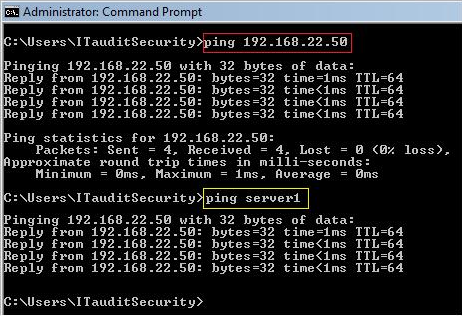
Spam ping, or sping, is referred to the process of abusive update notification sent from a spam blog to a ping server. This technique is performed by using software that is set to ping servers continuously with very short intervals. The ping process usually involves relevant pages so that a particular website could get its own PageRank higher. Thus, by sending dozens pings per minute, a page literally tells that its content is being constantly refreshed and therefore is relevant for search crawlers.
Cybersquatting
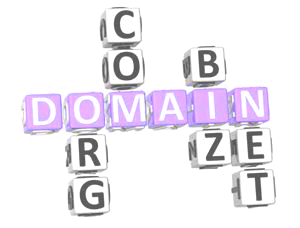
This is a very serious kind of black hat SEO activity which can lead not only to search engine penalties but also to criminal liability. Cybersquatting means creating and registering a domain name of already existing popular trademarks with several intentions:
- To make users perceive it as an official website and thus bring more traffic to a cybersquatter;
- To further sell a website to the trademark’s official owners for enormous sums of money;
- To use it for blackmailing original trademark owners in order to satisfy other cybersquatter’s needs.
All of the intentions are considered unlawful, which is why cybersquatting has become an important issue on the federal level.
An alternative to cybersquatting is typosquatting which is similar to the former but differs in that a domain has an existing trademark’s name being intentionally misspelled for driving more potential traffic.
Social networking spam

With the gradual growth of social networking, it became trendy for black hat SEO practitioners to implement spamming tactics within various social network communities as well as with particular members of those communities. Each year, thousands of users are being misled by skillful advertising messages that make them click on spammy links, get redirected to viral pages, and even have their pages hacked. Among #1 spammed social networks there are Facebook, LinkedIn, Google+, and Pinterest.
Cookie stuffing

Cookie stuffing is a dark side of affiliate marketing. In this case, there is a person who utilizes users as a source of profit by sending them third-party cookies to further provide both himself and third-party website with a certain share of money. It all starts from a tactic practitioner creating a link or a clickable image that leads a user to a third-part website. As a result of this unintended visit, a user receives that website’s cookie without ever noticing it. Next time, when a user happens to intentionally visit the target website to, say, buy something, a cookie stuffer will get some percentage from the resulting purchase.
Although this technique assumes that users are unaware of being involved into affiliate agreements, it nevertheless does not impact their ultimate choice of using third-party website’s services. However, if you still don’t like to be owned by someone, we recommend you to regularly clean your browser’s cookies.
What if your website has been hacked?

Once you are aware of the most typical black hat SEO strategies, you will manage to easily recognize if one of those has been implemented on your own website. The first thing you should do is to notify Google about spammy actions found on your website by sending them a webspam report through your page. It should be done to prevent you and other website owners from recurring spam attacks from the same sources.
If you discover that backlinks were created to link to your website, you can either contact those in charge of these activities personally anв ask them to delete the links or simply use Webmaster Tools’ allowing to disavow undesired backlinks by uploading them directly to Google.
A more serious case is when your website has been hacked through any kind of malware or virus. You can detect the problem either yourself or on seeing Google’s official warning at the top of your website page. Then you may ask Google for a but you will first have to make everything you can to delete malware software yourself.
Conclusion
If you think that the highest penalty that awaits you in case if you start performing black hat SEO activities is getting your rankings dropped, you are wrong. A more serious thing is that your website can be completely banned from all search engines, which means that no user will ever even stumble upon it. The worst alternative, however, lies through long-term lawsuits that can eventually lead to huge fines or imprisonment.
Nevertheless, we would like to end on a positive note. So if you are still doubting about whether to use black hat SEO techniques or not, take a look at which brightly highlights the difference between ‘good’ and ‘bad’ and which clearly shows that doing ‘good’ is in fact easier than you might think. The main goal is to promote your website’s visibility while thinking about real users and not search engines. Although it may take some time, using reliable time-honored SEO techniques will bring you more profit in the long run.









